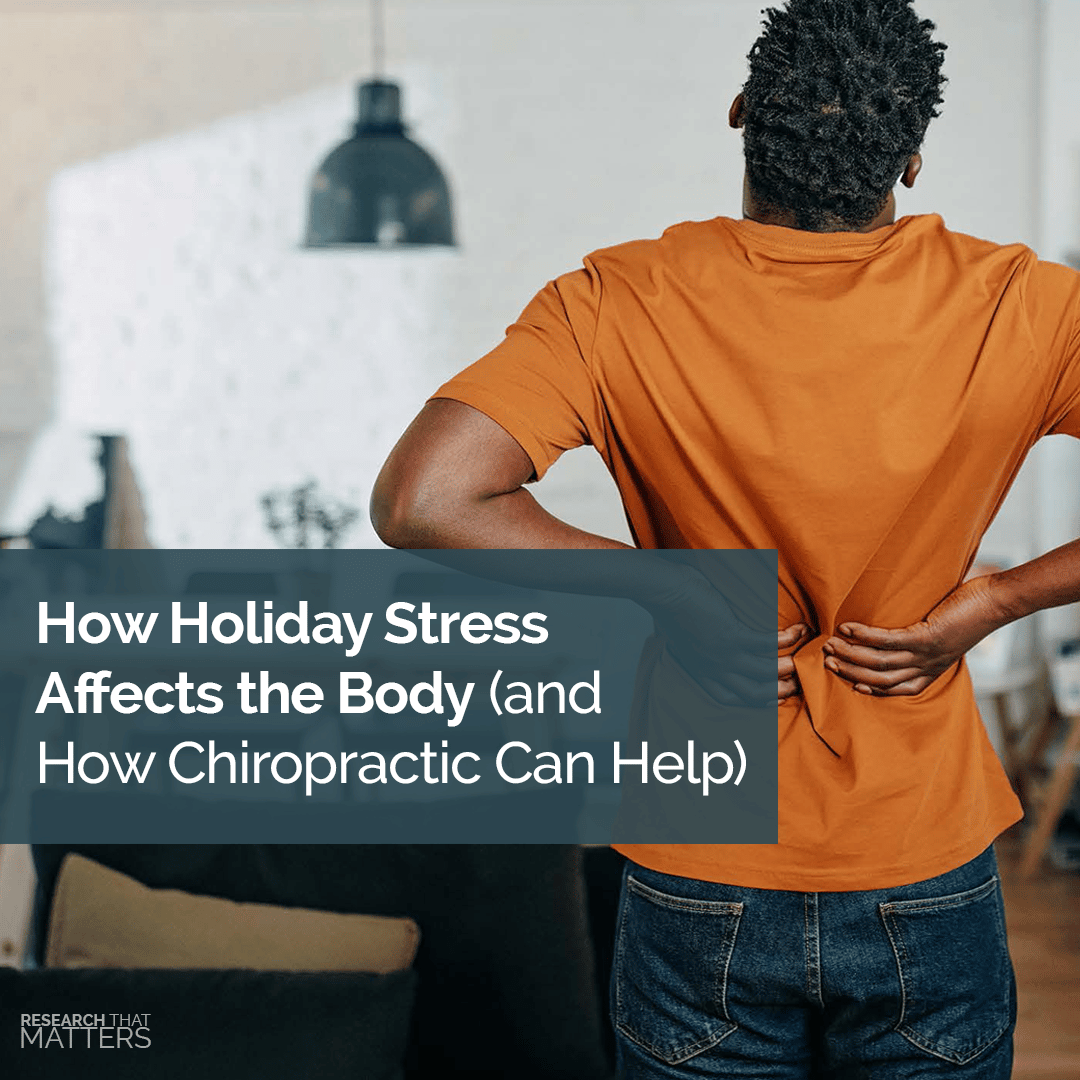As the leading chronic pain chiropractor in Mount Pleasant, we know a thing or two about stress and the effects it can have on our neighbors before, during, and after the holiday season.
And stress can actually be a good thing.
If a lion were chasing you, an increase in heart rate, muscle tension, and focus would hopefully help you escape unharmed!
Thankfully, you don’t need to worry about being chased by a lion today.
It might be someone cutting you off on the way to pick up your holiday gifts that could put your body into the same fight or flight mode.
Remember the last time you saw a car veering into your lane, and your heart rate went through the roof?!
That is an acute stress response in action.
Your brain and body respond to negative stress whether real or imagined, and chronic stress – yes, including chronic holiday stress – can have a profound impact on your health.
Why it Matters:
Again, in the short term, acute stress can be a good thing.
It helps us react quickly.
Your brain tells your adrenal glands to release hormones (chemicals) that help your body respond in an instant.
Adrenaline increases your heart rate, elevates your blood pressure and boosts energy supplies.
Cortisol, the primary stress hormone, increases sugars in the bloodstream, enhances your brain’s use of glucose, increases the availability of substances that repair tissues, and curbs functions that would be nonessential or harmful in a fight-or-flight situation.
This complex natural alarm system can also alter immune system responses and suppress the digestive system.
Now, normally, the body’s stress response / alarm system is self-limiting.
However, if the body’s stress response continues unchecked for an extended period of time, you may feel yourself slip into chronic stress mode.
As the go-to chronic pain chiropractor in Mount PLeasant, we’re here to tell you that, yes, chronic stress affects people of all ages and from all walks of life.
(Yes, even that friend you have that lives for yoga and meditates every. single. day.)
And it probably comes as no surprise that chronic holiday stress can wreak havoc on your brain and body – we’re talking heightened levels of cortisol secretion and even the development of a sensitized physiologic stress response.
What’s more, the symptoms of chronic pain and chronic stress overlap and often feed into one another, causing the cycle to continue.
Here are some key points to remember about the chronic stress cycle…
● Chronic stress can lead to anxiety, depression, headaches, sleep problems, and potentially more.
● Stress, pain, and inflammation are all connected by the stress hormone cortisol.
● Spinal adjustments may be able to promote a decrease in your cortisol level.
Wait? Chiropractic care could help me with my chronic holiday stress?
Indeed it can.
Chiropractic Care Can Help You Manage Chronic Holiday Stress
Recent studies have shown that chiropractic care, specifically spinal adjustments, may help to decrease your body’s overall stress levels.
In one recent study, researchers found that participants who received chiropractic interventions for their chronic, recurring neck pain and headaches reported significant improvement in both their perceived physical and mental stress levels.
They also reported improved physical function, which is thought to be the mechanism via which chiropractic care can act to reduce the recurrence of chronic stress and chronic pain that can contribute to cycles of chronic stress.
Next Steps:
So, to put a “bow” on everything you just learned, we recommend taking some time each day to check on your own stress levels throughout the holiday season.
If you start to feel it rising, we hope you’ll give us a call, and make an appointment with the top chronic pain chiropractor in Mount Pleasant for a tension relieving, soothing adjustment.
Together, our compassionate team of wellness experts can help you combat that chronic holiday stress and say goodbye to those nagging back and neck aches so you can actually enjoy the holidays this year and for many to come!










